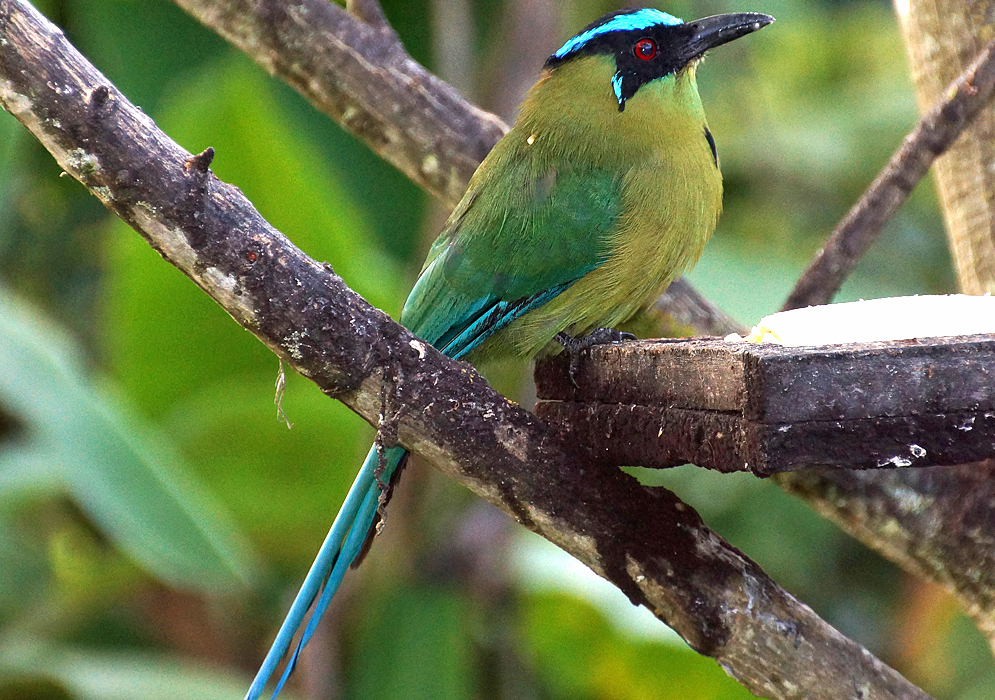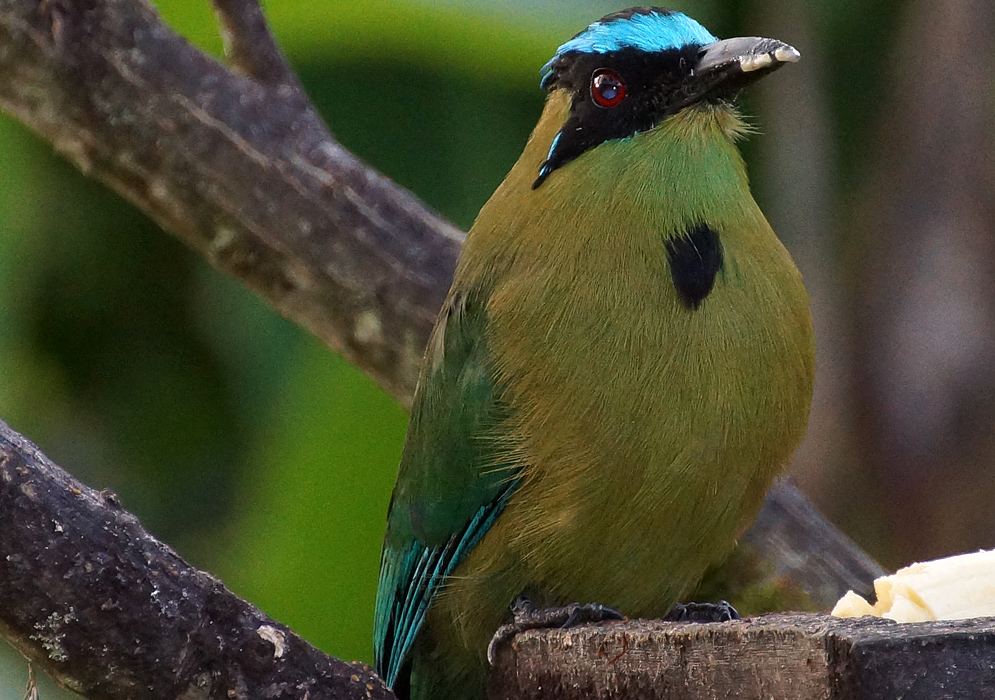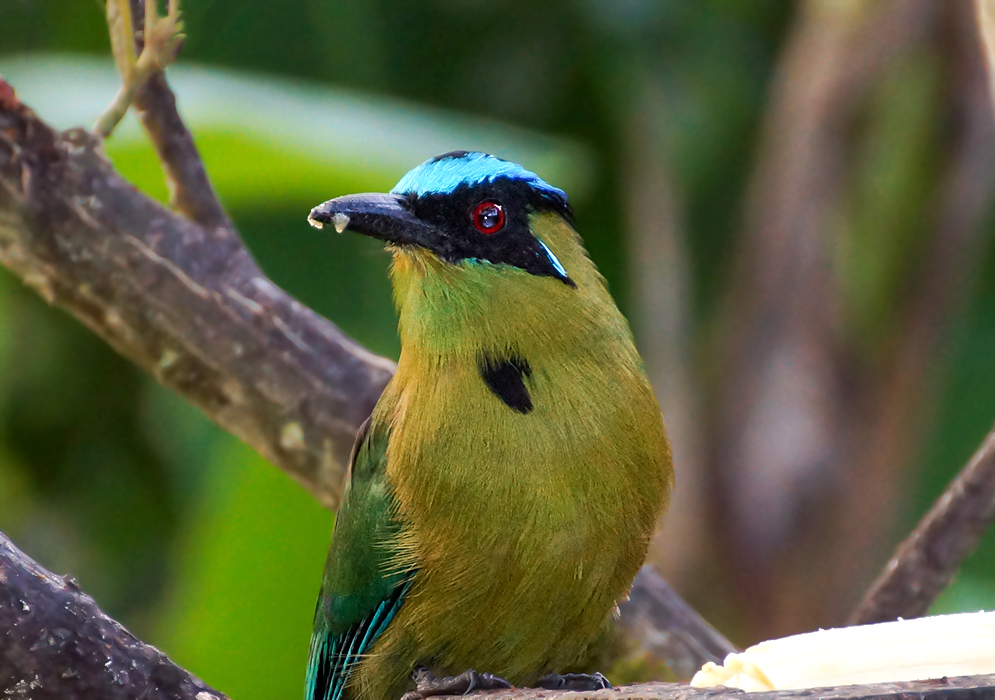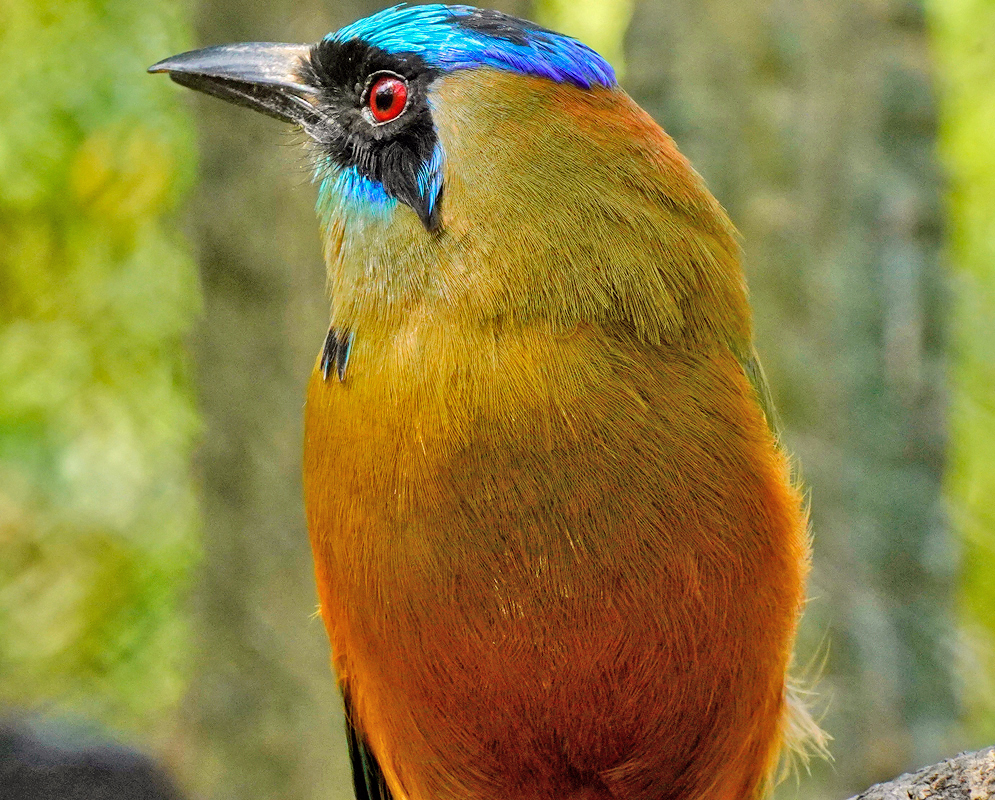This post has 11 Simple Fields-fields attached. Show fields.

The Andean Motmot, or Momotus aequatorialis, is a vibrant and sizeable bird that inhabits the Andes region of South America. This species, known for its striking plumage and distinctive tail, primarily resides in Colombia, Ecuador, Peru, and northwestern Bolivia, making its home in the humid montane forests of these regions. This bird thrives at various elevations, ranging from 3,300 feet in Ecuador to as high as 10,200 feet in Colombia, adapting to different altitudinal zones across these countries. It is particularly notable for its long tail with a unique "racquet" tip and a body length ranging from 18 to 19 inches, weighing between 5 to 7.1 ounces. Its distinctive appearance includes a stout black bill and a long tail with a unique "racquet" tip. The bird displays a primarily green plumage covering its back, wings, throat, breast, and belly. A striking feature is its black crown, bordered with a "diadem" of various shades of blue, and a black "mask" bordered with blue. The central part of its breast displays a black spot or streak, and the racquets on its tail are dark blue. The Andean motmot is omnivorous, primarily consuming arthropods and fruits. It has also been documented eating small marsupials from the genus Micoureus. It is assumed that the Andean motmot nests in long burrows in earth banks, similar to other motmots. International Union for Conservation of Nature (IUCN) has assessed this species as being of Least Concern. Photographed in Caqueta Colombia.







